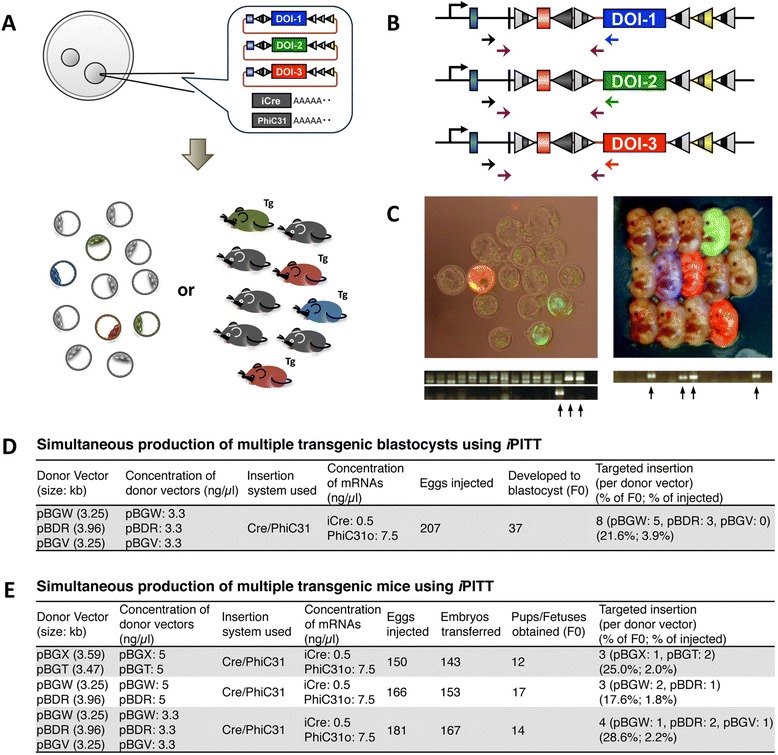Figure 4.

Production of multiple targeted Tg mouse lines using i- PITT. (A) Schematic of simultaneous production of multiple Tg lines using i-PITT. Multiple donor vectors that harbor different DOI are mixed and co-injected with iCre and PhiC31o mRNA into the fertilized eggs carrying the i-PITT landing pad in their genome. Appearance of different fluorescent colors indicates successful insertion of DOI. (B) Schematic of targeted insertion alleles for each DOI. TIex allele 1 is shown as an example. Arrows indicate the PCR primer sets used for genotype identification of the correct insertion. For detecting targeted transgenesis in blastocyst, 1st PCR was performed using the outer most primer pair sets (black and blue or black and green or black and red arrows) and nested PCR using the internal primer pair sets (purple arrows). For detecting targeted transgenesis in fetuses, PCR with only the purple primer pair is sufficient. (C) Example of simultaneous production of multiple targeted Tgs. Blastocysts (left panel) and day 13.5 fetuses (right panel) derived from injected zygotes. Zygotes/fetuses exhibiting blue, green or red fluorescence indicate successful insertion of DOI from pBGV, pBGW or pBDR vectors respectively. The results of PCR-based genotyping are shown below the images; arrows indicate positive samples. (D, E) The results of i-PITT experiment in blastocyst embryos (D) and fetuses/pups (E).
